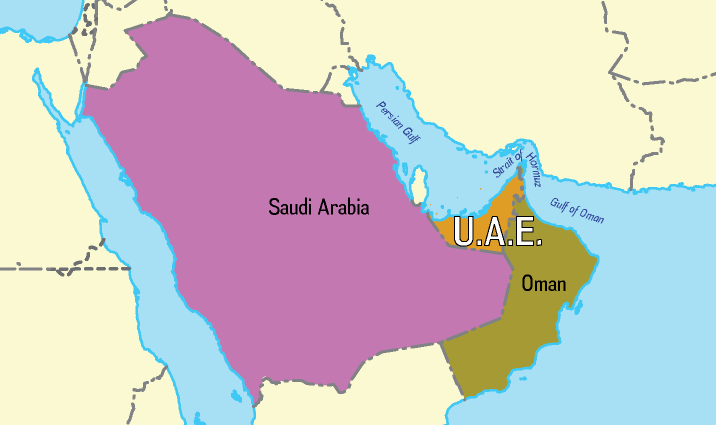Editorials/Opinions Analysis For UPSC 18 February 2022
Contents:
- Etching a trade line to bond beyond oil
Etching a trade line to bond beyond oil
Context:
India has revamped its free trade agreement (FTA) Strategy and it has prioritised at least six countries or regions to deal with, in which the United Arab Emirates (UAE) figures at the top of the list.
Relevance:
GS-II: Bilateral Groupings & Agreements, Effect of Policies & Politics of Countries on India’s Interests, GS-III: Mobilization of Resources
Dimensions of the Article:
- India’s Revamped FTA Strategy
- United Arab Emirates-a major economic hub
- Background of India-UAE Relations
- India-UAE Trade and Investments
- Significance of Trade Agreement with UAE
- Compliance Requirements
- Way Forward
India’s Revamped FTA Strategy:
- India’s approach towards FTAs is now focusing more on gaining meaningful market access and facilitating the Indian industry’s integration into global value chains.
- It aims to respond to the need of new emerging dynamics in international trade and the Indian economy.
- The Government of India, under its new FTA strategy, has focused to deal with six countries or regions, namely- the United Kingdom, the European Union, Australia, Canada, Israel, United Arab Emirates (UAE) and a group of countries in the Gulf Cooperation Council (GCC).
- The Government is also actively revisiting pending FTAs, entering into fresh negotiations and also being open to interim and mini-trade deals.
United Arab Emirates-a major economic hub:
- The UAE too announced, in 2021, its intent to pursue bilateral economic agreements with eight countries which includes India. It aimed to conclude these agreements within one year.
- The UAE being strategically located has emerged as an important economic centre not only within the Middle East/West Asia region, but also globally.
- UAE’s ‘Vision 2021’: Thought this Vision, it sought to diversify its economy and reduce its dependency on oil.
- Diversification of Economy: Since 2012, it sought to diversify its economy by focusing more on non-hydrocarbon sectors and had achieved significant progress towards it.
- Hydrocarbon sector: Although the UAE has diversified its economy, ‘the hydrocarbon sector remains very important followed by services and manufacturing.
- Within services, financial services, wholesale and retail trade, and real estate and business services are the main contributors’.

Background of India-UAE Relations:
- 1972: India and the UAE established diplomatic relations in 1972.
- 2015: The year marked the beginning of a new strategic partnership between the two countries when India’s Prime Minister visited UAE.
- 2017: The Crown Prince of Abu Dhabi visited India as a chief guest at India’s Republic Day celebrations.
- Both countries agreed that bilateral relations were to be upgraded to a comprehensive strategic partnership.
- 2021: The negotiations in 2017 culminated in an India-UAE comprehensive economic partnership agreement, eventually launched in September 2021.
India-UAE Trade and Investments:
- The UAE is India’s third largest trading partner.
- The India-UAE total trade merchandise has been valued at U.S.$52.76 billion for the first nine months of the fiscal year 2021-22.
- The aim is to boost bilateral merchandise trade to above U.S.$100 billion and services trade to U.S.$15 billion in five years.
- Strengthen India’s exports:
- India aims at reaching the figure of U.S.$400 billion of merchandise export..
- Signing a trade agreement with an important country such as the UAE would help sustain the growth momentum.
- Many Indian companies have also invested in the tourism, hospitality, catering, health, retail, and education sectors.
- Several multinational companies from other geographies too would find the UAE and India an attractive market to invest.
Significance of Trade Agreement with UAE:
- Support India’s Exports: India is aiming to achieve the U.S.$1 trillion of merchandise exports and U.S.$1 trillion of services exports by the year 2030.
- A Trade agreement with the UAE will be a stepping-stone to realise these ambitious export targets.
- India is currently witnessing a big turnaround in manufacturing and the UAE would be an attractive export market for Indian electronics, automobiles, and other engineering products.
- A Route for greater access:
- The UAE is a party to several regional and bilateral FTAs, including with countries in the Gulf Cooperation Council (GCC).
- As part of the GCC, the UAE has strong economic ties with Saudi Arabia, Kuwait, Bahrain, and Oman,
- It shares a common market and a customs union with these nations.
- Under the Greater Arab Free Trade Area (GAFTA) Agreement, the UAE has free trade access to Saudi Arabia, Kuwait, Bahrain, Qatar, Oman, Jordan, Egypt, Iraq, Lebanon, Morocco, Tunisia, Palestine, Syria, Libya, and Yemen.
- This FTA with the UAE will pave the way for India to enter the UAE’s strategic location
- It will also facilitate to gain easy access to the Africa market and its various trade partners.
- It will help India to become a part of that supply chain especially in handlooms, handicrafts, textiles and pharma.
Compliance Requirements:
- There is a need to address the Non-Tariff Barriers (NTBs) because the UAE tariff structure is bound with the GCC, and the applied average tariff rate is 5%.
- The reflection of NTBs can be seen through Non-Tariff Measures (NTMs) which have mostly been covered by Sanitary and Phytosanitary (SPS) and Technical Barriers to Trade (TBT).
- Sanitary and Phytosanitary (SPS) notifications of UAE: It is mainly related to live poultry, meat, and processed food.
- Technical Barriers to Trade (TBT) notifications of UAE: It is mainly related to fish, food additives, meat, rubber, electrical machinery, etc.
- Most of the notifications are related to consumer information, labelling, licensing or permit requirements and import monitoring and surveillance requirements.
- These compliances pose a challenge for Indian exporters.
Way Forward:
- The Free Trade Agreement should focus on bringing in more transparency and predictability in the use of NTBs so that their compliance becomes less cumbersome.
- The FTA must comprehensively address all these Trade barriers to facilitate India’s Exports.
-Source: The Hindu





